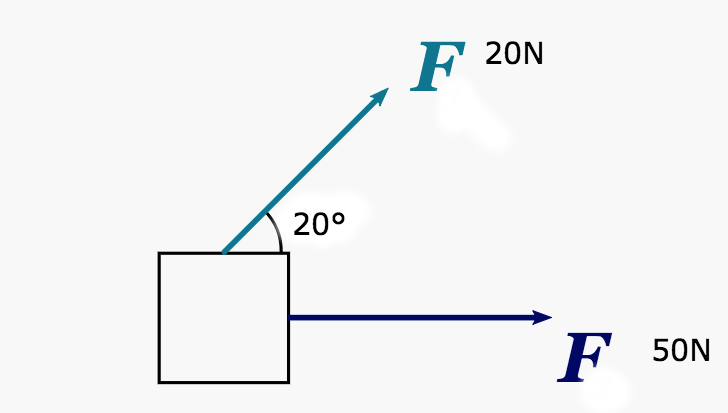Today, we'll be looking at the math you need to know to resolve forces. This kind of mathematics is often referred to as mechanics and it's understandable if you find it tricky at first, but it's all built upon the math that you should have studied with a math tutor previously.
Let's have a look at some of the common mechanical mathematics problems that you encounter starting with concepts you may have already seen before moving on to some of the more difficult ones.
This level of math will require an understanding of algebra, too.

Gravity
Before we start doing math involving gravity, we need to define what gravity is. On Earth, gravity's acceleration is 9.8ms^-2, but normally, we just call gravity "g" in mathematical formulae.
To understand gravity, you also need to be familiar with forces. You may have covered this in science or physics classes and have seen the formula F = ma. This means that the force (F, in Newtons) is equal to the mass (m, in kg) of an object multiplied by its acceleration (a, in m/s^2).
We mentioned "gravity's acceleration" earlier so basically, gravity is just a kind of acceleration. This means that we can change our earlier equation to replace acceleration with gravity to give us a new equation that tells us weight, which is just the force due to gravity.
W = mg
This equation means the weight (W) of an object is equal to its mass multiplied by the acceleration due to gravity. If you're thinking mathematically, you can see that algebraically this equation is the same as the previous one with acceleration replaced by gravity, which is how we know that weight is a force due to gravity.
Here is what you need to know about solving high school math problems.
Trigonometry
Before we really get started with resolving forces, we need an understanding of trigonometry and the basic trigonometric functions. Make sure you remember the rules of SOHCAHTOA.
If not, here they are:
- SOH: Sin(θ) = Opposite / Hypotenuse
- CAH: Cos(θ) = Adjacent / Hypotenuse
- TOA: Tan(θ) = Opposite / Adjacent
The reason we need SOHCAHTOA is that we need to split forces into two components: a horizontal component defined as x, and a vertical component defined as y.

Resolving forces
Now we have that in mind, we can start resolving forces. To keep things simple, we'll use a made-up example. As you'll have seen before in lots of different math tests and quizzes, mathematicians love a fictional scenario to test your understanding. You can obtain a guide on Calculus if you're having trouble understanding the basics.
From this scenario, you'll need to work out from the language used which numbers you need to use.
Remember: always draw a diagram!
Let's say there are two forces acting on an object. One force acts horizontally, with a magnitude of 50N, while another force acts at an angle of 20 degrees, with a magnitude of 20N. What is the resultant ("overall") force acting on this object?

We can't get the resultant force from these two forces by simply adding them up because they're working in different directions. Don't forget that "resultant" just means the overall or total force.
The 50N force is acting horizontally so we don't really need to do anything with it. However, the 20N force is acting at an angle of 20 degrees from that of our first force so we'll express it as two forces with one working perpendicularly to the first force and another acting in the same direction as it.
These split forces will be shown horizontally on the x axis and vertically on the y axis.
Our 20N force can be shown as the hypotenuse of a right triangle with a 20-degree acute angle.
We can now use SOHCAHTOA and algebra to calculate the adjacent and opposite sides of the triangle as we have the hypotenuse and the angle.
Let's start by calculating our horizontal force on the x axis.
Using SOHCAHTOA:

Since we know the angle is 20 degrees and the hypotenuse is 20N, we can rearrange the equation to calculate the magnitude of our force in the horizontal direction:

Now we can just put our numbers into the equation:

This means the force is acting at 18.8 Newtons in the horizontal direction.
To calculate the vertical component of the force, we can do pretty much the same thing using one of the other equations from SOHCAHTOA using sin instead of cos.

As always, we can rearrange this formula using our knowledge of algebra as we're looking for the opposite side of the triangle. The opposite side of our triangle will be the vertical line on our triangle and the magnitude of our force on the y axis.

Just like last time, we already though the angle (represented by the Greek symbol theta) and the hypotenuse so we just have to substitute those in our equation with our known numbers to find out what the vertical force is.

The 20N force at an angle of 20 degrees is 6.8N vertically.
Need help? Consider looking for a math tutor near me.
Piecing Everything Together
We originally knew that a 50N force was acting on our object horizontally and a 20N force was acting on our object at 20 degrees to the horizontal. We've now been able to split the angled 20N force into a 6.8N vertical force and a 18.8N horizontal force.
Now, we can simply add the values together for the forces acting in the same direction.
Vertical Forces
The vertical forces are the easiest of the two because there's really only one of them.
6.8N + 0 = 6.8N
The horizontal force isn't acting at all vertically so we can just call it 0. You could even calculate this using the math we used previously if you wanted, but you'd just get a vertical force of 0N.
The only force acting vertically on our object is the vertical component of our 20N force.
Horizontal Forces
Calculating the horizontal forces will be slightly more difficult, but it's still fairly simple math:
50N + 18.8N = 68.8N
The 50N horizontal force, which is acting fully horizontally, is added to the horizontal component of the 20N force. On the x axis, there's a 68.8N force acting on our object.
A Final Triangle
Now we know the resultant force horizontally and vertically, but we don't know what they are combined. To solve this and work out the overall force acting on the object, we can create another triangle.
The horizontal force of 68.8N will become the adjacent side of our triangle and the vertical force of 6.8N will become the opposite side of the triangle.
The combined forces will be equivalent to the hypotenuse of this right triangle so we just need Pythagoras' theorem to work it out. The equation for this would be:

With this equation, we can just add in the values we have to get this:

This means that the resultant force of our 68.8N horizontal force and 6.8N vertical force is 69.1N.
Bonus Point!
We've worked out the resultant force of these two forces on our object, but we haven't worked out the resulting direction of these two forces. You may be asked in a test or a quiz to provide this, but thanks to SOHCAHTOA, it won't be a problem.
We know the opposite and adjacent already, so we'll just use the TOA part.

To find the angle, we'll just use the inverse tan function.

Our resultant force is acting on an angle of 5.6 degrees.
Solving Mechanic Forces with a Tutor
Hopefully, you've found this article useful for solving forces. The best way to get better at these kinds of problems is by practicing with lots of them. Look for example questions online or study using past papers of the tests or exams that you'll be taking. To succeed in math, you need to study and practice a lot.
It can also help to see how these math problems are phrased and the kinds of scenarios they use. If you understand the fundamentals, you'll recognize when you're being asked to resolve forces.
Naturally, none of our examples involved any kind of friction or drag as these are theoretical scenarios, but let's not complicate things right now.
If you need help with these kinds of things, don't forget that there are plenty of tutors out there to help you. By using a math tutor, you can go back over concepts you may have missed in the classroom, and learn in a way that's right for you.
With practice, study, and hard work, you'll be a mathematician in no time!
For yet more tricky math problems explained, visit our guides on calculus and exponentials and logs.
Don't forget that if you're interested in getting help with math, you can search Superprof for a qualified and experienced online math tutor.















